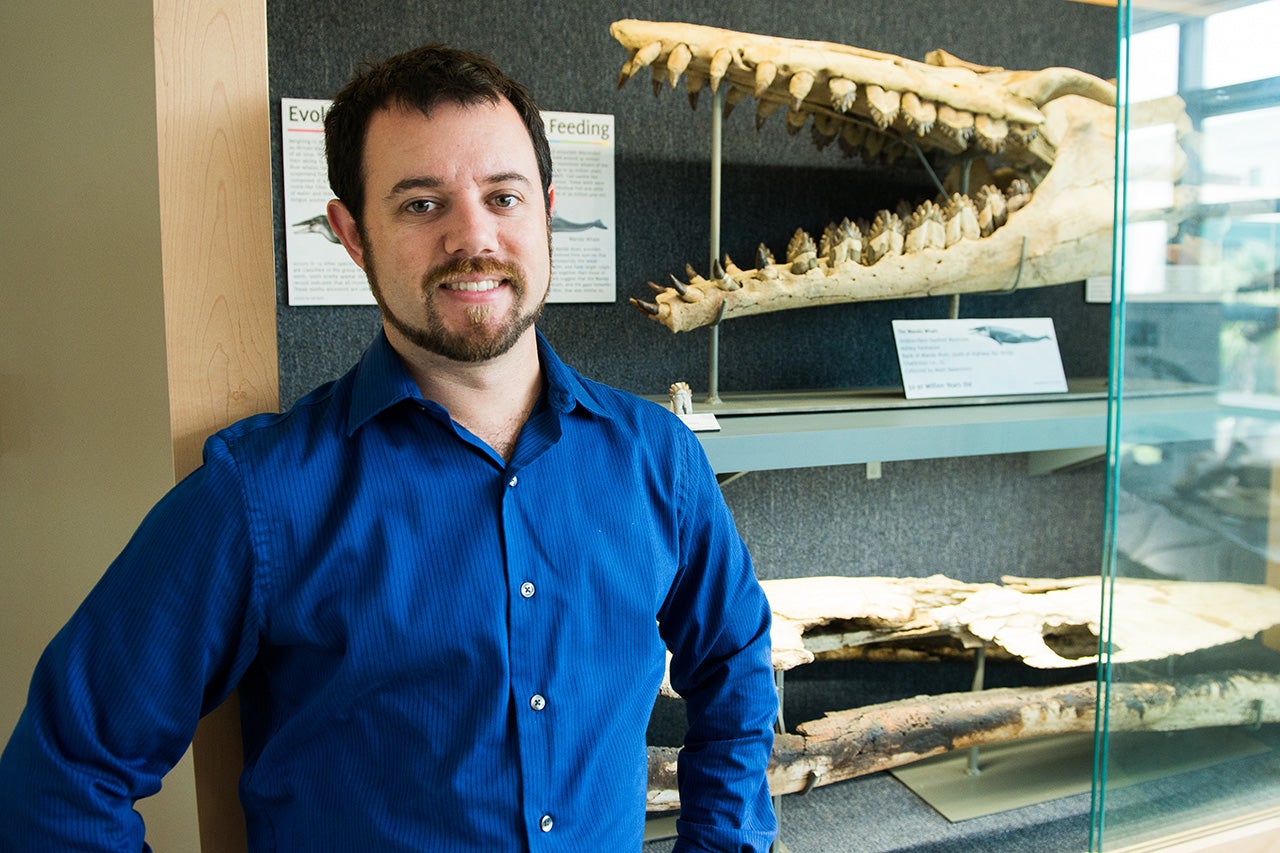A curious fossil found near Charleston has resulted in a major discovery concerning the evolution of baleen whales.

A rendering of Coronodon havensteini.
College of Charleston adjunct professor of geology Robert W. Boessenecker says the discovery of an early whale fossil found in South Carolina’s Wando River offers important clues about whales’ transition from teeth to baleen, a filter-feeding system inside the mouths of certain species of the aquatic mammal. The discovered whale fossil, which is estimated to be some 30 million years old, is hypothesized to be a transitional species, somewhere between primitive whales with hind legs and modern baleen whales.
The findings are part of a new study co-authored by Boessenecker and published in the July 2017 issue of Current Biology. The study was a collaboration between the College of Charleston and professors Jonathan Geisler ’95 and Brian Beatty of the New York Institute of Technology. Geisler, who led the study, is a College of Charleston alumnus.
Baleen whales’ unique feeding method allows the animals to strain huge volumes of saltwater, leaving only krill, fish, and other small organisms behind. Baleen is a soft tissue structure and does not fossilize. Modern baleen whales also lack teeth as adults.
The newly discovered species of toothed baleen whale is named Coronodon havensteini. The genus name refers to the mammal’s crown-shaped teeth, and the species name in honor of discoverer and CofC alumnus Mark Havenstein ’88.
The fossil is on display at the Mace Brown Museum of Natural History in the College of Charleston’s School of Sciences and Mathematics Building, at 202 Calhoun St. According to the study, Coronodon havensteini would have been about the size of a killer whale, but with a triangular snout and large, ornamented and overlapping teeth.
Boessenecker says scientists know from fossil records that the earliest baleen whales had teeth. However, the transition from teeth to baleen remains controversial. This study indicates that early toothed whales used spaces between their large complex teeth for filtering, and that baleen gradually replaced teeth over millions of years.
The findings offer another example of a broader evolutionary pattern in which body parts — in this case teeth — that evolved for one function are later co-opted for another function. The researchers say they are now examining similar fossils from the Charleston area in search of additional evidence. The Charleston area is one of the few areas on earth where fossils of the earliest baleen whales and echolocating dolphins can be discovered – shedding light on the early evolution of modern whales and dolphins.
Featured image by Reese Moore





